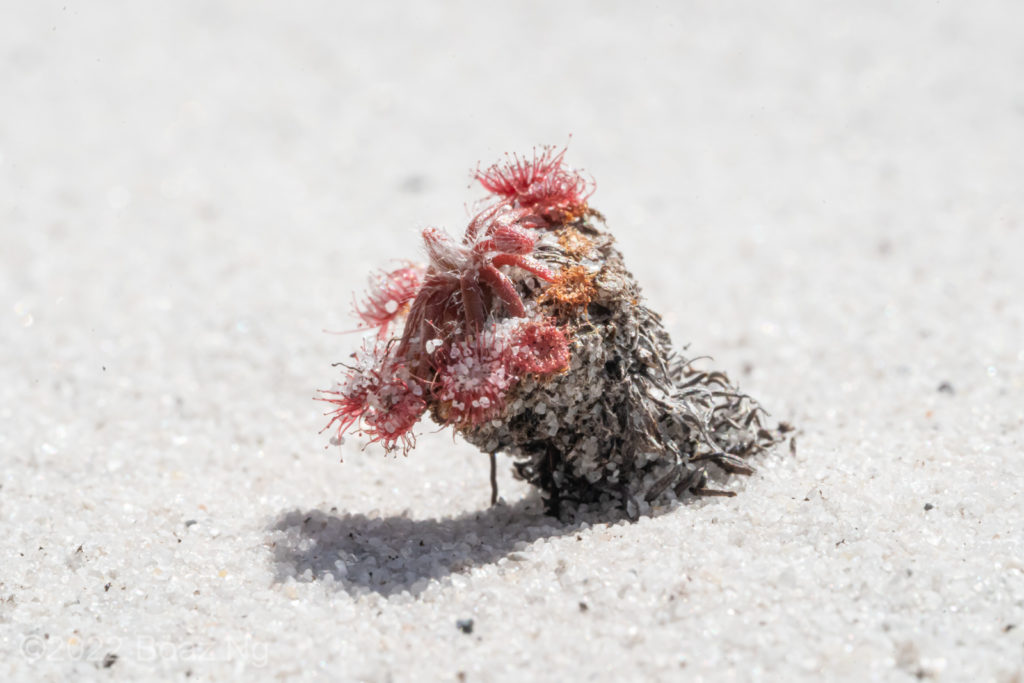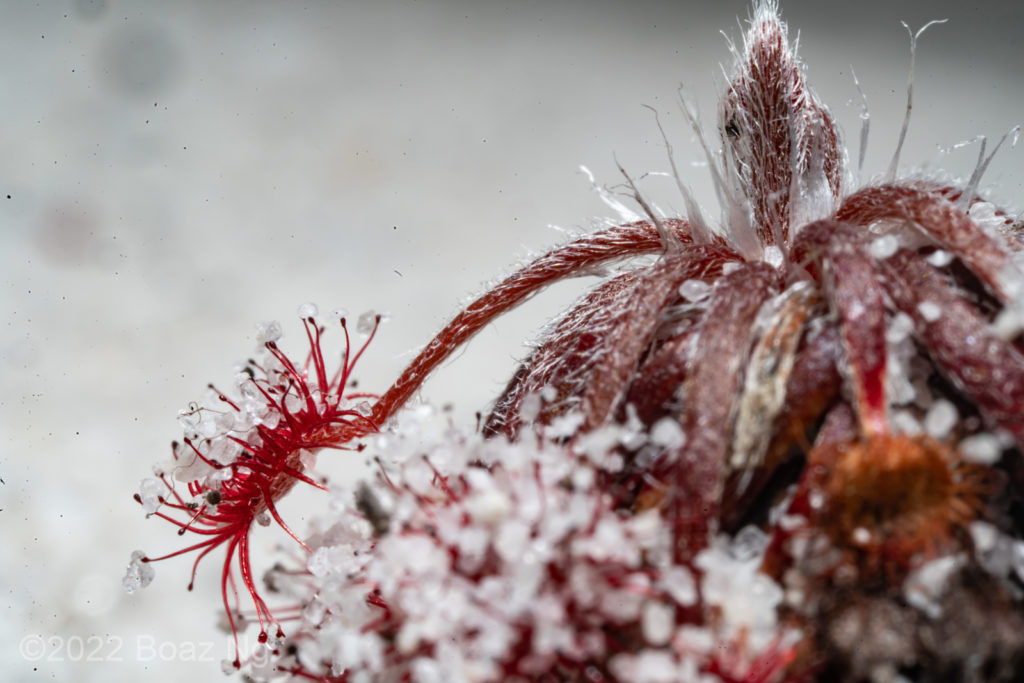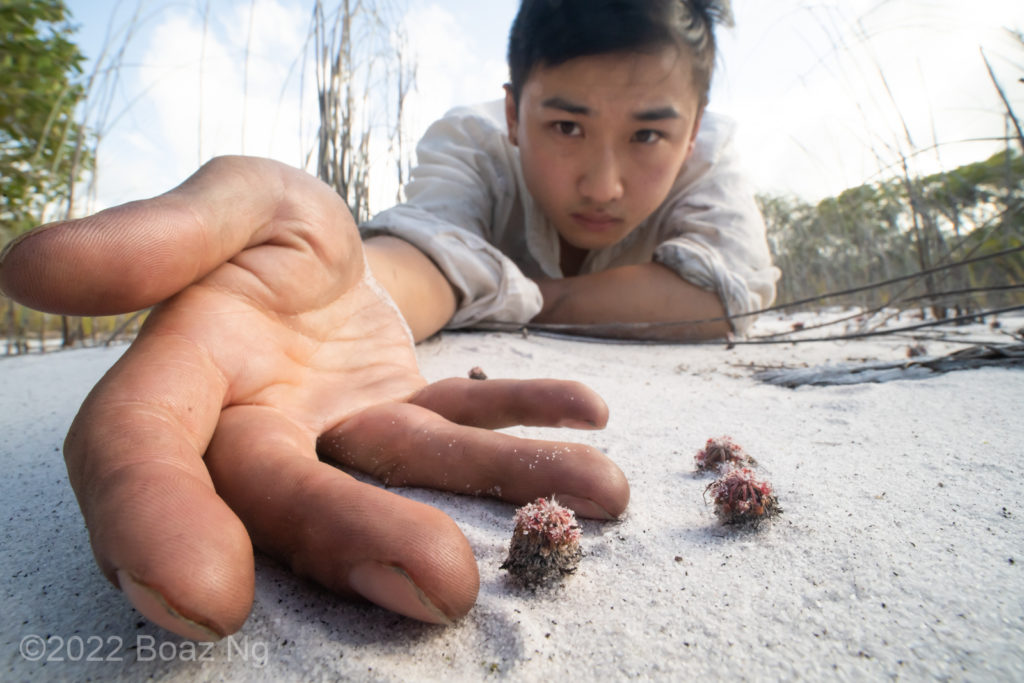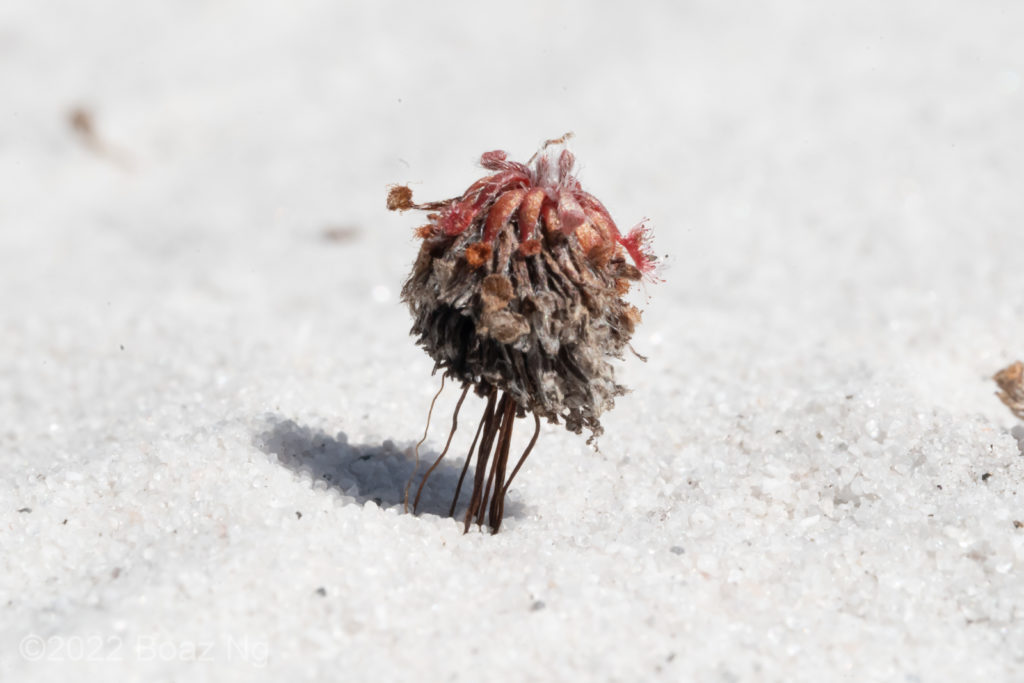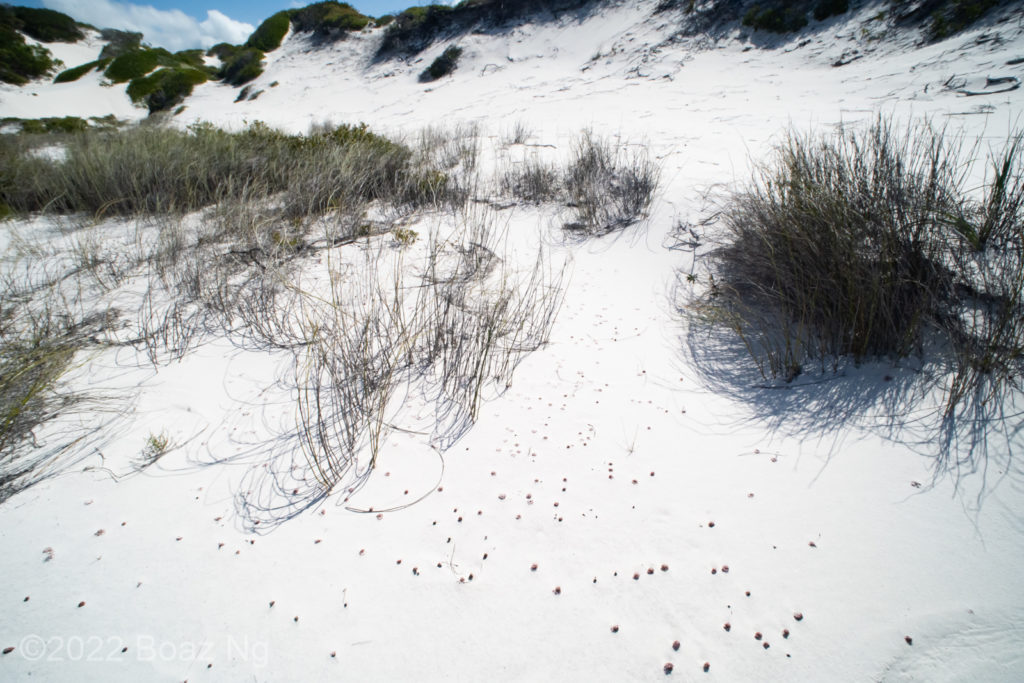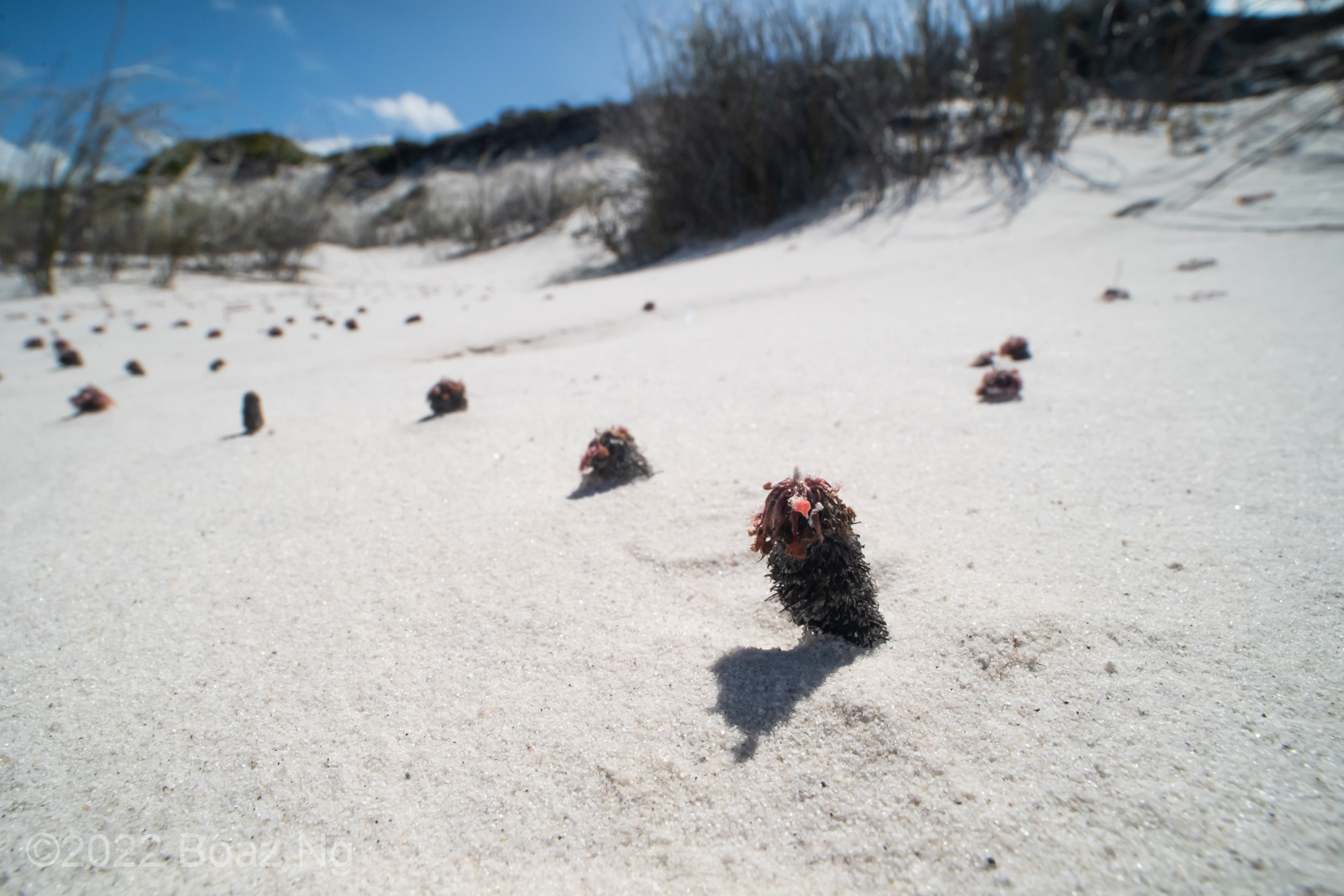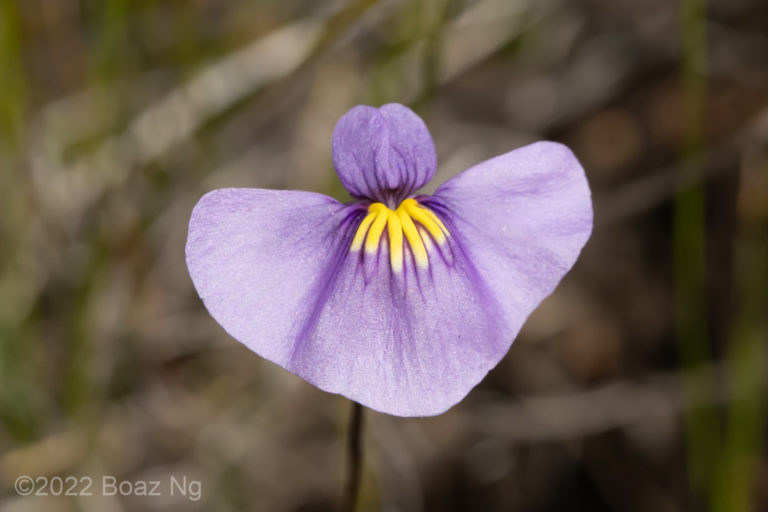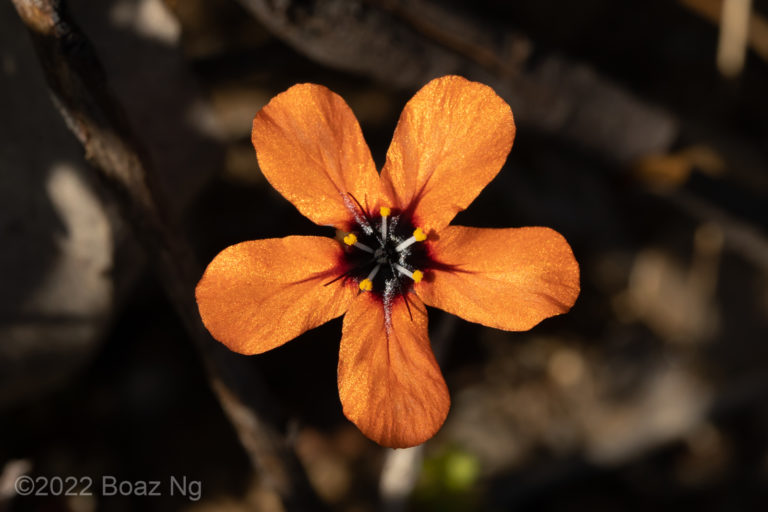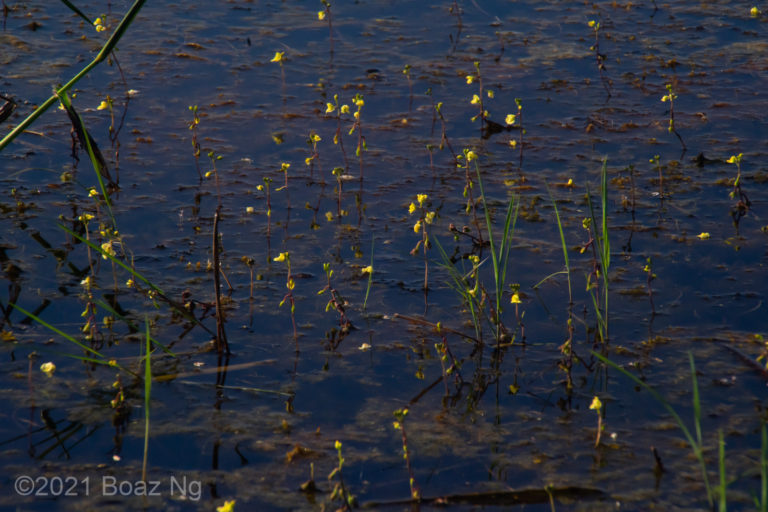Drosera stipularis is a rare sundew in the section Lasiocephala notable for its diminutive size and prominent stipules. The species was described by Baleeiro et al in 2020.
Despite being a member of the petiolaris complex of tropical sundews, D. stipularis closely resembles a pygmy sundew in morphology and habit. The red rosettes are small, roughly 1-2cm in diameter and raised on a stem of accumulated old growth. The leaves are moderately hairy, with a linear petiole and orbicular lamina. The petiole recurves upwards close to where it adjoins the lamina. A prominent bud of stipules is raised from the centre of the rosette, which mainly distinguishes it from its closest relatives. The peduncle is mostly glabrous below the flowers.
D. stipularis grows in white sand drifts north of Cooktown. The raised rosette prevent the diminuitive species from being buried in the ever-shifting sands of its environment. Long tap roots similarly anchor the plant firmly in place. This location is monsoonal, with distinct wet and dry seasons. The plants presumably enter dormancy at the height of the dry season but tap roots are able to access subterranean water one or two months after the rains stop.
At the location I visited, widespread hybridisation occurs between D. stipularis and D. petiolaris. ‘Pure’ D. stipularis was mostly found on slightly elevated flats in deeper sand between large dunes whereas D. petiolaris preferred swamps that formed in the depressions. At some locations, the hybrid had outcompeted D. stipularis since the plants must be cross-pollinated and the hybrid is vigorous and adaptable to various niches.
